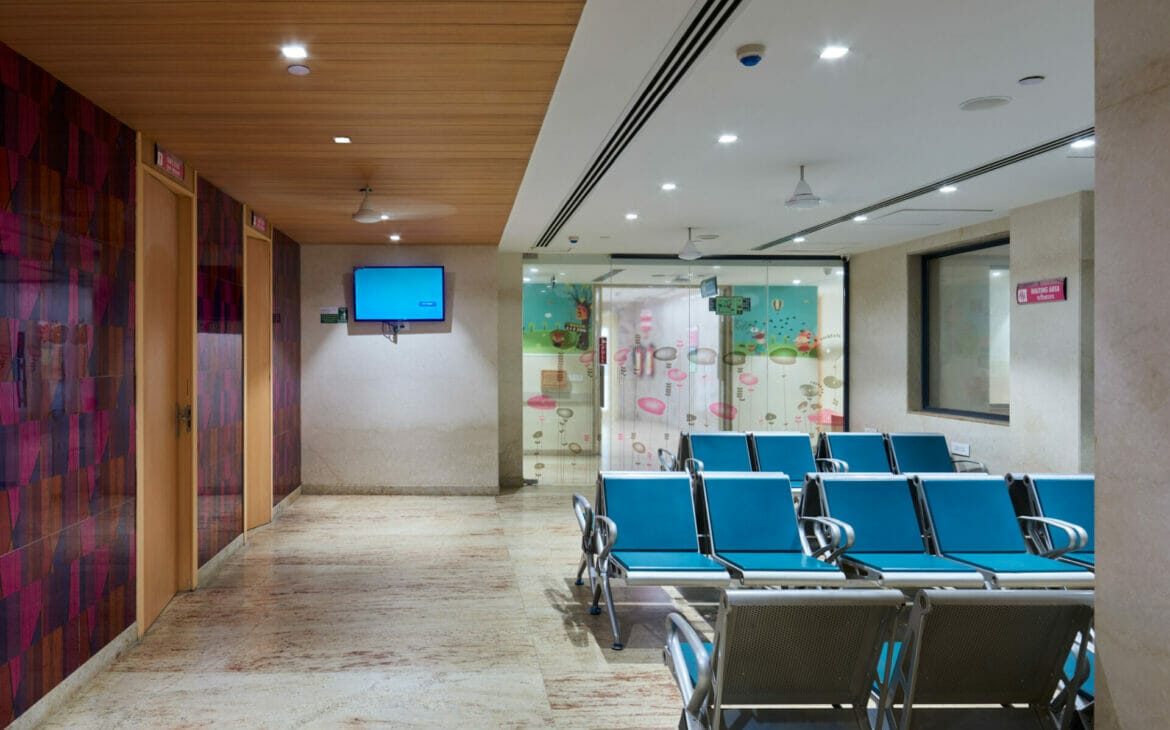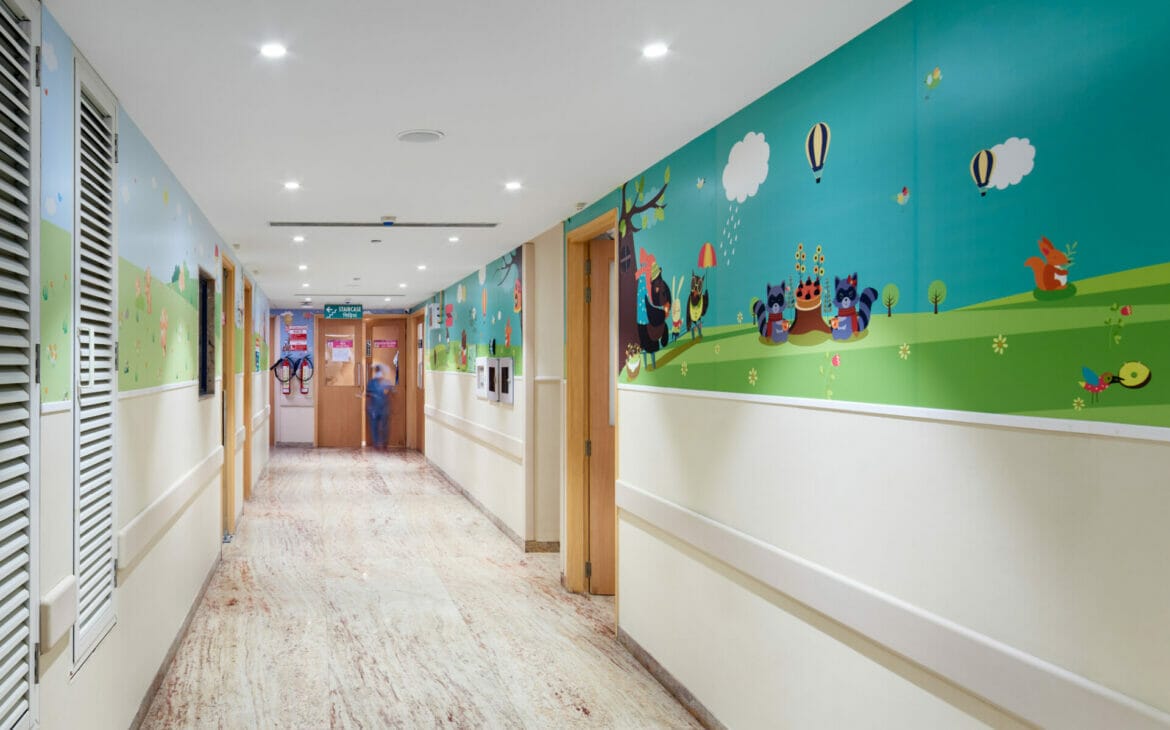Healthcare is an important issue for the development of any country. Having access to high-quality healthcare services means having a population that is healthy and can contribute to society. Everyone has the right to healthcare, but in India, this is a divisive issue. Most of the medical infrastructure that meets national or international standards is concentrated in tier 1 cities. This lack of proper health infrastructure for most of the population puts additional pressure on resources in metropolitan areas and lowers the quality of life in tier 2 and 3 cities.

Ashirwad Hospital was redesigned to address concerns about community health and wellness in Varanasi, a tier 2 city. The hospital, founded in 1977, is located in the heart of Varanasi and specializes in obstetrics and gynaecology. It is one of the most prominent healthcare providers in the city. The challenge was to find a way to increase the capacity of the existing building from 50 to 150 beds while also meeting national standards of care. To do this, the team had to navigate the dense urban context of the city and make some improvements to the existing buildings.

The expanded Ashirwad Hospital has a vertical zoning system, with the monolithic block carved up into distinct hospital functions by levels – clearly demarcating the public from the private areas. While the old structure has been retained up to the third floor, our interventions included strengthening its structure, refurbishing it, adding another floor and ensuring the seamless integration of the existing block with the new block. The redesign interventions involved employing pile foundations and a lightweight steel structural system for the integrated fourth floor that would prevent damage to surrounding structures.

The ground floor has been redesigned to accommodate several diagnostic and radiology facilities, examination and sample collection rooms, amenities for staff and admin spaces, and comfortable waiting areas for patients and visitors. OPD consultation chambers have been built on the same floor, as part of the new wing.

The Mother & Child Care units, NICU wing, and the in-patient department (IPD) are located on the first floor. The retrofitted fourth-floor houses operation theatres (OTs), pre-and post-operative care units, and intensive care units (ICUs), enabling medical staff to move patients between various stages of critical care with maximum efficiency. This allows for a more streamlined and cohesive care experience for patients and families.
The primary objective of the redesign was to introduce greater flexibility and ease of usage. In accordance with National Centre for Disease Control guidelines, the passages were expanded to three times their original size and the new OTs were designed as modular units to enable customization as per medical or instructional requirements.

When it comes to design, creating a space that is not only aesthetically pleasing, but also promotes community health and awareness, is key to improving the mental wellness of those who occupy it. With this in mind, the redesign uses a muted palette of pinewood, stone and plaster finishes to induce a sense of serenity among users. Punctuating this interior envelope are furnishings and signage in soothing tones of teal and green; not only does the colour selection aid in maintaining the sense of serenity, but the distinct contrast also aids user navigation.

A shift in color between the different areas of the hospital indicates a difference in spatial usage. In the NICU wing, illustrations have been used as a tool for visual engagement for the hospital’s youngest patients.
To make up for the lack of space on-site, the services have been put into two basements in the new wing. This includes services that are essential to the functioning of a hospital like water storage and treatment plants, effluent treatment plants, and central sterile supply systems but also includes facilities that make the building self-sufficient and ensure smooth functioning like an oxygen plant.

Ashirwad Hospital in Varanasi is an excellent example of how well-designed medical facilities can have a positive impact on a community. By providing quality healthcare and setting a precedent for the revitalization of existing structures, Ashirwad Hospital is playing a key role in the development of social infrastructure in Tier 2 cities.
Name of Project: Ashirwad Hospital
Location: Varanasi, Uttar Pradesh, India
Principal Designer: Vijay Gupta Architects
Design Team: Azra, Pooja, Harish
Photography Credit: Vijay Gupta Architects firm





















